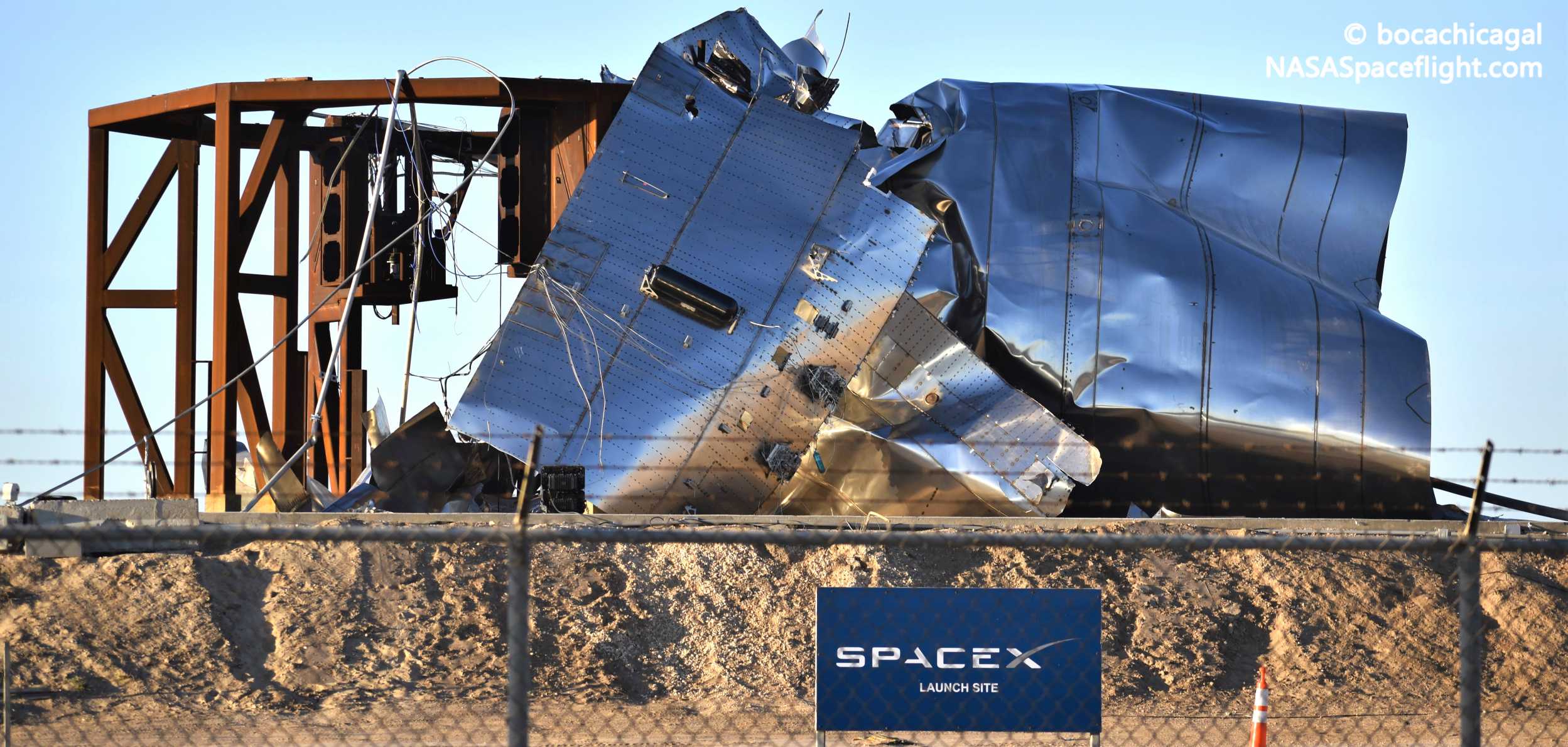
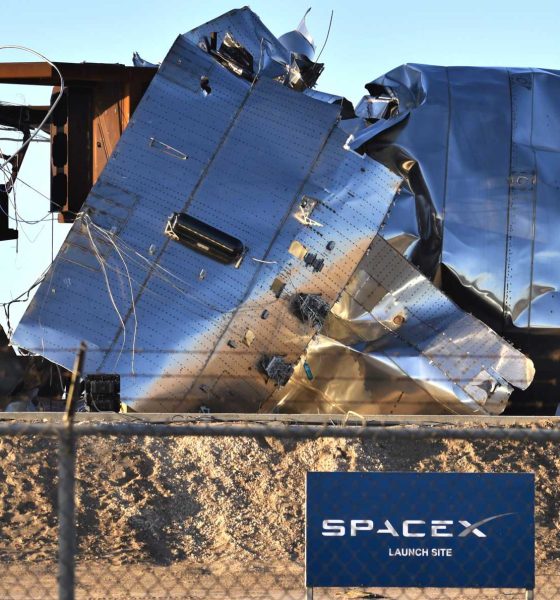
News
A SpaceX Starship prototype just lifted off – but not how it was supposed to
SpaceX’s newest Starship spacecraft prototype unintentionally lifted off during a critical test at the company’s Boca Chica, Texas facilities – a development that was almost certainly unplanned.
On February 26th, under the cover of an incredibly thick fog bank, SpaceX carefully transported its second full-scale Starship prototype – measuring some 30m (100 ft) tall and 9m (30 ft) wide – to its Boca Chica, Texas launch and test pad, situated just a mile or so down the road from an ever-growing rocket factory. After just two days of last-second work spent outfitting the giant rocket tank with a few additional sensors and fully connecting it to ground systems (electricity, communications, and fluids), SpaceX kicked off the second cryogenic ‘proof’ test of an integrated Starship tank section.
An opaque layer of frost quickly developed on the ship’s mirror-smooth hull, effectively serving as a giant gauge for the liquid nitrogen pooling inside it. About an hour after faux-propellant (liquid nitrogen) loading began, Starship SN01’s liquid oxygen tank violently burst, causing the entirety of the vehicle’s 30-40 metric ton (65,000-90,000 lb) bulk to launch several dozen feet into the air. Stacked atop the oxygen tank, SN01’s methane tank – likely pressurized with nitrogen or oxygen gas – shot off like a house-sized bullet when the rest of the tank section impacted the ground, flying some 150-300+ meters (500-1000 ft) from the pad.
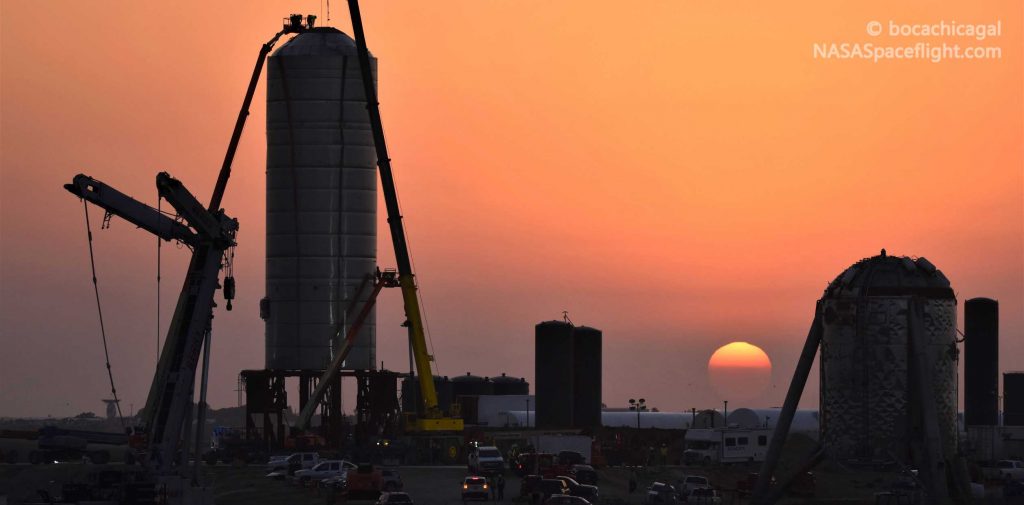
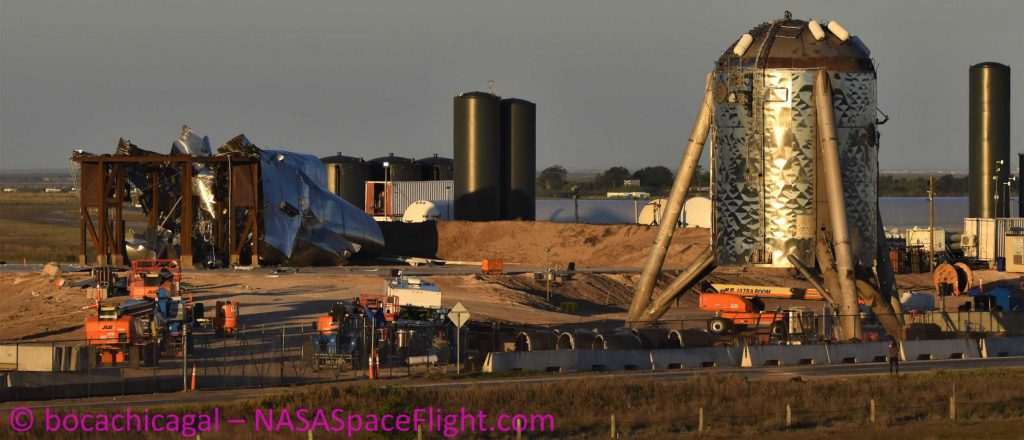
Long-time Boca Chica resident, photographer, and videographer Mary (also known as “bocachicagal” on forums) captured the seemingly unintentional Starship failure in spectacular detail on February 28th. Given how high the heavy vehicle jumped after its aft tank dome failed, as well as how fast the house-sized methane tank flew after it breached, it’s safe to say that both were significantly pressurized before the anomaly.
What’s unclear is what exactly went wrong with Starship SN01 and whether SpaceX expected it to fail during the test. Known as a cryogenic proof test, SpaceX pressurized the ship’s tanks with liquid nitrogen and a gas of some kind in an effort to verify its structural integrity and determine if it was safe to proceed to more risky tests. According to CEO Elon Musk, Starship SN01 was actually meant to support a full wet dress rehearsal (WDR) with liquid oxygen and methane, followed by a Raptor engine static fire test shortly thereafter.
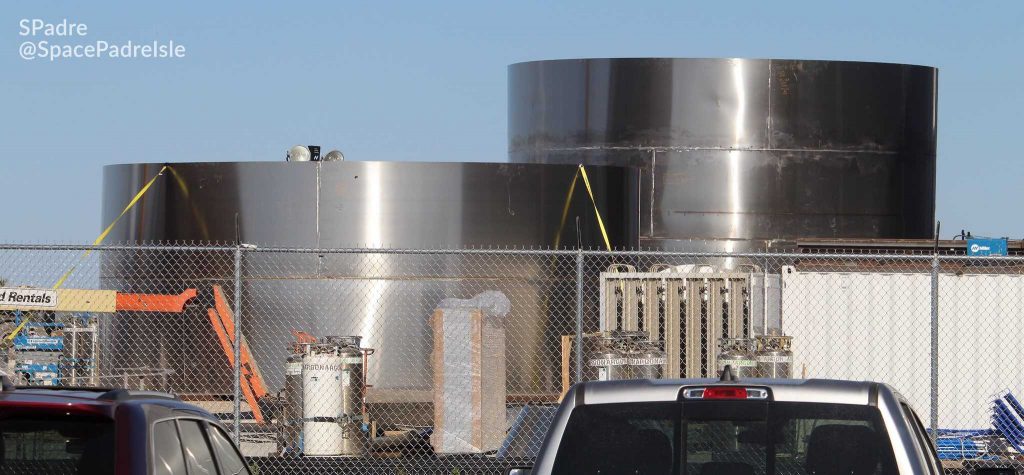
That plan is clearly moot, now, and also seems to indicate that SpaceX is likely somewhat surprised about the outcome of SN01’s first proof test. Thankfully, this particular Starship was built quickly (and thus likely cheaply), coming together in an unfathomable four weeks. Additionally, SpaceX’s second serial Starship prototype (SN02) is already well on its way to the launch pad, with multiple sections of stacked steel rings in work. Based on the four or so weeks SN01 took to go from first weld to pressure test, SN02 could be just two or three weeks away from its own proof test debut.
Check out Teslarati’s Marketplace! We offer Tesla accessories, including for the Tesla Cybertruck and Tesla Model 3.

News
Tesla FSD fleet is nearing 7 billion total miles, including 2.5 billion city miles
As can be seen on Tesla’s official FSD webpage, vehicles equipped with the system have now navigated over 6.99 billion miles.

Tesla’s Full Self-Driving (Supervised) fleet is closing in on almost 7 billion total miles driven, as per data posted by the company on its official FSD webpage.
These figures hint at the massive scale of data fueling Tesla’s rapid FSD improvements, which have been quite notable as of late.
FSD mileage milestones
As can be seen on Tesla’s official FSD webpage, vehicles equipped with the system have now navigated over 6.99 billion miles. Tesla owner and avid FSD tester Whole Mars Catalog also shared a screenshot indicating that from the nearly 7 billion miles traveled by the FSD fleet, more than 2.5 billion miles were driven inside cities.
City miles are particularly valuable for complex urban scenarios like unprotected turns, pedestrian interactions, and traffic lights. This is also the difference-maker for FSD, as only complex solutions, such as Waymo’s self-driving taxis, operate similarly on inner-city streets. And even then, incidents such as the San Francisco blackouts have proven challenging for sensor-rich vehicles like Waymos.
Tesla’s data edge
Tesla has a number of advantages in the autonomous vehicle sector, one of which is the size of its fleet and the number of vehicles training FSD on real-world roads. Tesla’s nearly 7 billion FSD miles then allow the company to roll out updates that make its vehicles behave like they are being driven by experienced drivers, even if they are operating on their own.
So notable are Tesla’s improvements to FSD that NVIDIA Director of Robotics Jim Fan, after experiencing FSD v14, noted that the system is the first AI that passes what he described as a “Physical Turing Test.”
“Despite knowing exactly how robot learning works, I still find it magical watching the steering wheel turn by itself. First it feels surreal, next it becomes routine. Then, like the smartphone, taking it away actively hurts. This is how humanity gets rewired and glued to god-like technologies,” Fan wrote in a post on X.
News
Tesla starts showing how FSD will change lives in Europe
Local officials tested the system on narrow country roads and were impressed by FSD’s smooth, human-like driving, with some calling the service a game-changer for everyday life in areas that are far from urban centers.

Tesla has launched Europe’s first public shuttle service using Full Self-Driving (Supervised) in the rural Eifelkreis Bitburg-Prüm region of Germany, demonstrating how the technology can restore independence and mobility for people who struggle with limited transport options.
Local officials tested the system on narrow country roads and were impressed by FSD’s smooth, human-like driving, with some calling the service a game-changer for everyday life in areas that are far from urban centers.
Officials see real impact on rural residents
Arzfeld Mayor Johannes Kuhl and District Administrator Andreas Kruppert personally tested the Tesla shuttle service. This allowed them to see just how well FSD navigated winding lanes and rural roads confidently. Kruppert said, “Autonomous driving sounds like science fiction to many, but we simply see here that it works totally well in rural regions too.” Kuhl, for his part, also noted that FSD “feels like a very experienced driver.”
The pilot complements the area’s “Citizen Bus” program, which provides on-demand rides for elderly residents who can no longer drive themselves. Tesla Europe shared a video of a demonstration of the service, highlighting how FSD gives people their freedom back, even in places where public transport is not as prevalent.
What the Ministry for Economic Affairs and Transport says
Rhineland-Palatinate’s Minister Daniela Schmitt supported the project, praising the collaboration that made this “first of its kind in Europe” possible. As per the ministry, the rural rollout for the service shows FSD’s potential beyond major cities, and it delivers tangible benefits like grocery runs, doctor visits, and social connections for isolated residents.
“Reliable and flexible mobility is especially vital in rural areas. With the launch of a shuttle service using self-driving vehicles (FSD supervised) by Tesla in the Eifelkreis Bitburg-Prüm, an innovative pilot project is now getting underway that complements local community bus services. It is the first project of its kind in Europe.
“The result is a real gain for rural mobility: greater accessibility, more flexibility and tangible benefits for everyday life. A strong signal for innovation, cooperation and future-oriented mobility beyond urban centers,” the ministry wrote in a LinkedIn post.
News
Tesla China quietly posts Robotaxi-related job listing
Tesla China is currently seeking a Low Voltage Electrical Engineer to work on circuit board design for the company’s autonomous vehicles.

Tesla has posted a new job listing in Shanghai explicitly tied to its Robotaxi program, fueling speculation that the company is preparing to launch its dedicated autonomous ride-hailing service in China.
As noted in the listing, Tesla China is currently seeking a Low Voltage Electrical Engineer to work on circuit board design for the company’s autonomous vehicles.
Robotaxi-specific role
The listing, which was shared on social media platform X by industry watcher @tslaming, suggested that Tesla China is looking to fill the role urgently. The job listing itself specifically mentions that the person hired for the role will be working on the Low Voltage Hardware team, which would design the circuit boards that would serve as the nervous system of the Robotaxi.
Key tasks for the role, as indicated in the job listing, include collaboration with PCB layout, firmware, mechanical, program management, and validation teams, among other responsibilities. The role is based in Shanghai.
China Robotaxi launch
China represents a massive potential market for robotaxis, with its dense urban centers and supportive policies in select cities. Tesla has limited permission to roll out FSD in the country, though despite this, its vehicles have been hailed as among the best in the market when it comes to autonomous features. So far, at least, it appears that China supports Tesla’s FSD and Robotaxi rollout.
This was hinted at in November, when Tesla brought the Cybercab to the 8th China International Import Expo (CIIE) in Shanghai, marking the first time that the autonomous two-seater was brought to the Asia-Pacific region. The vehicle, despite not having a release date in China, received a significant amount of interest among the event’s attendees.








